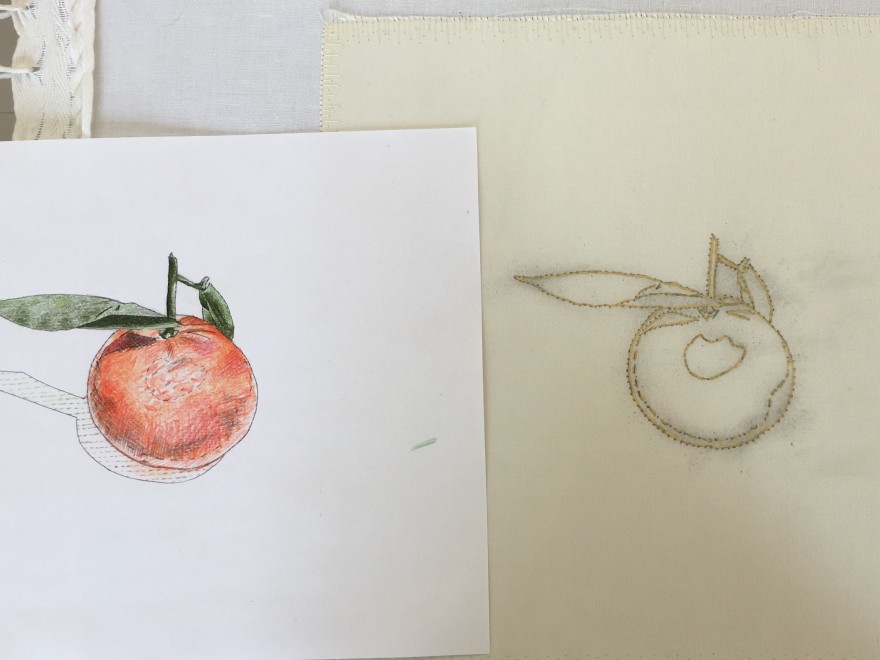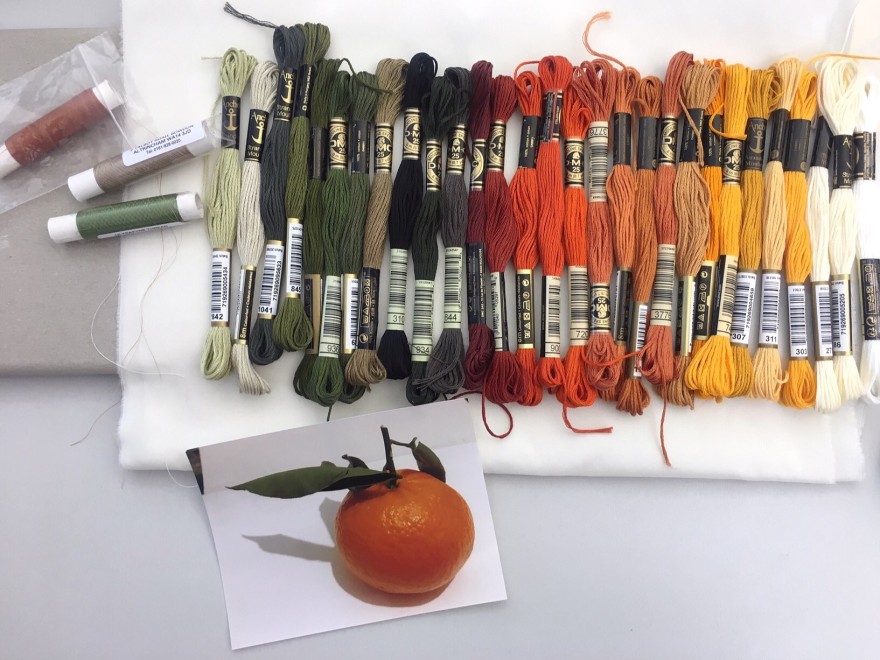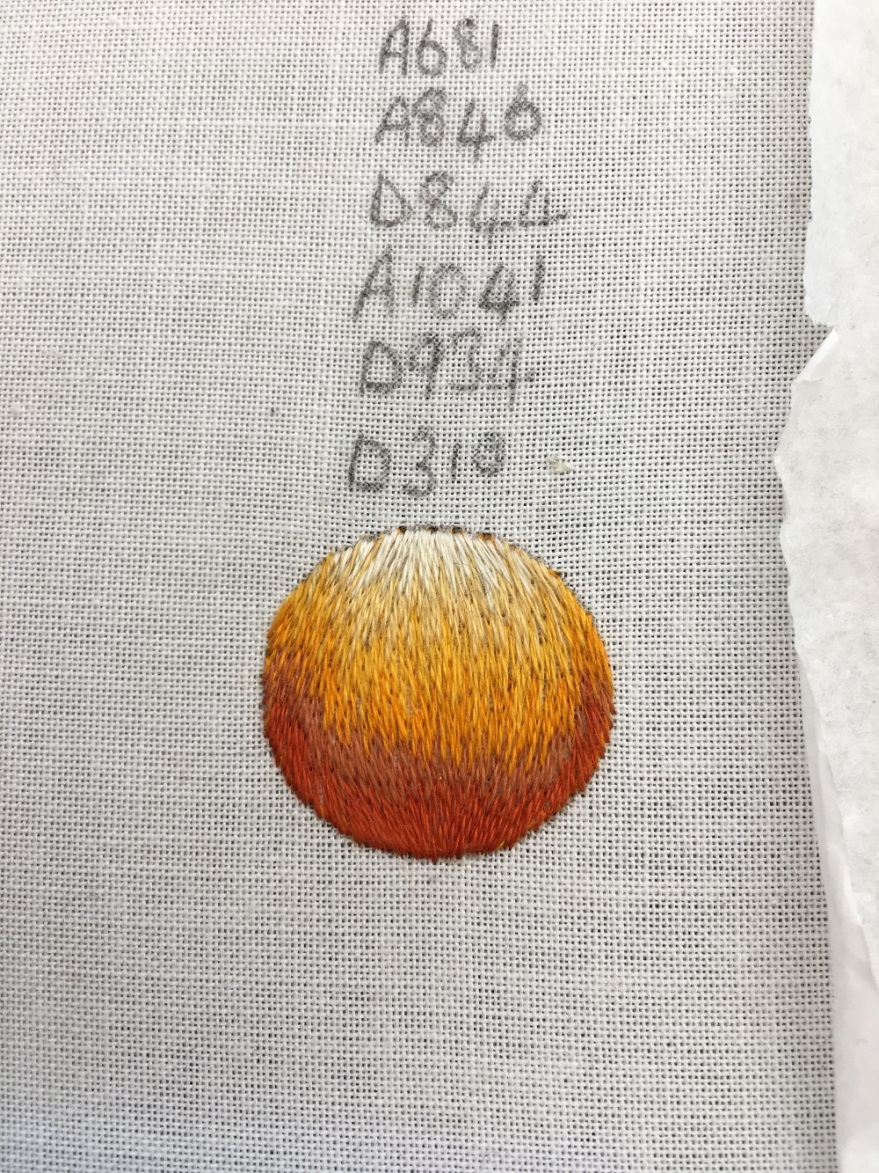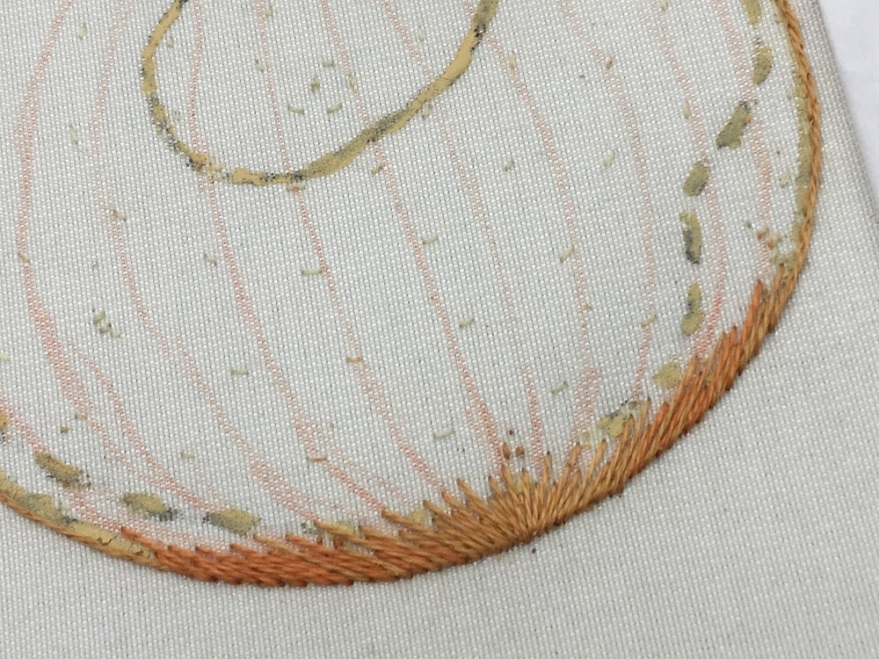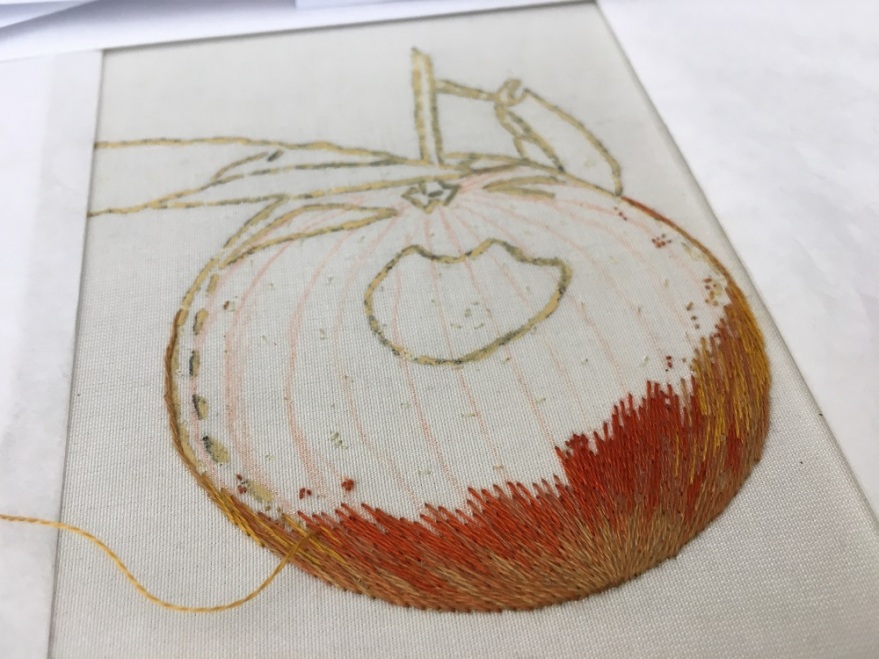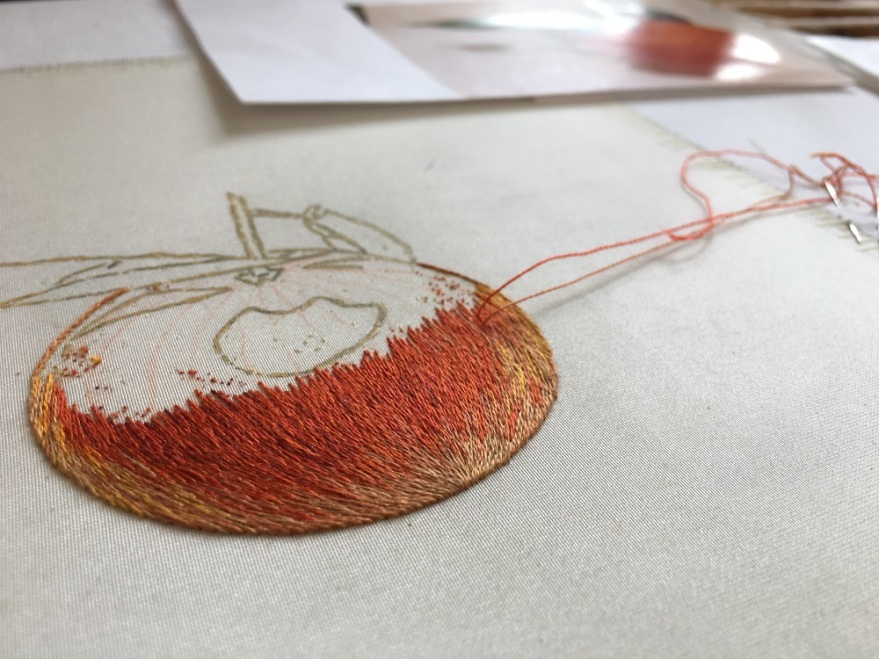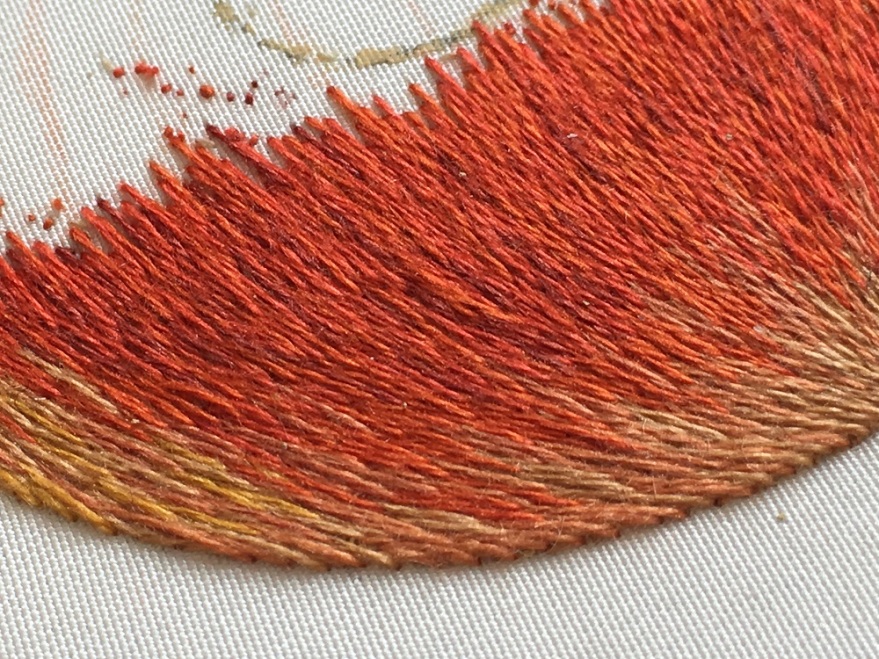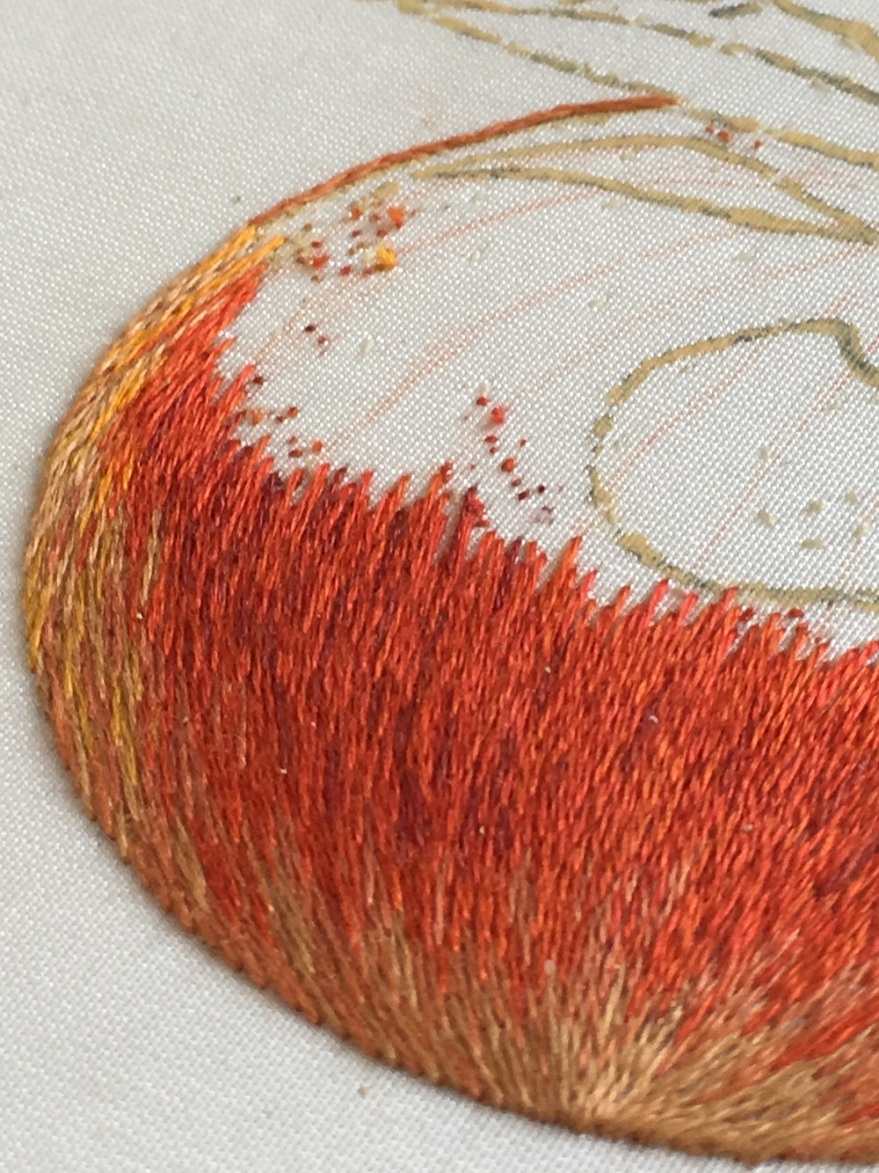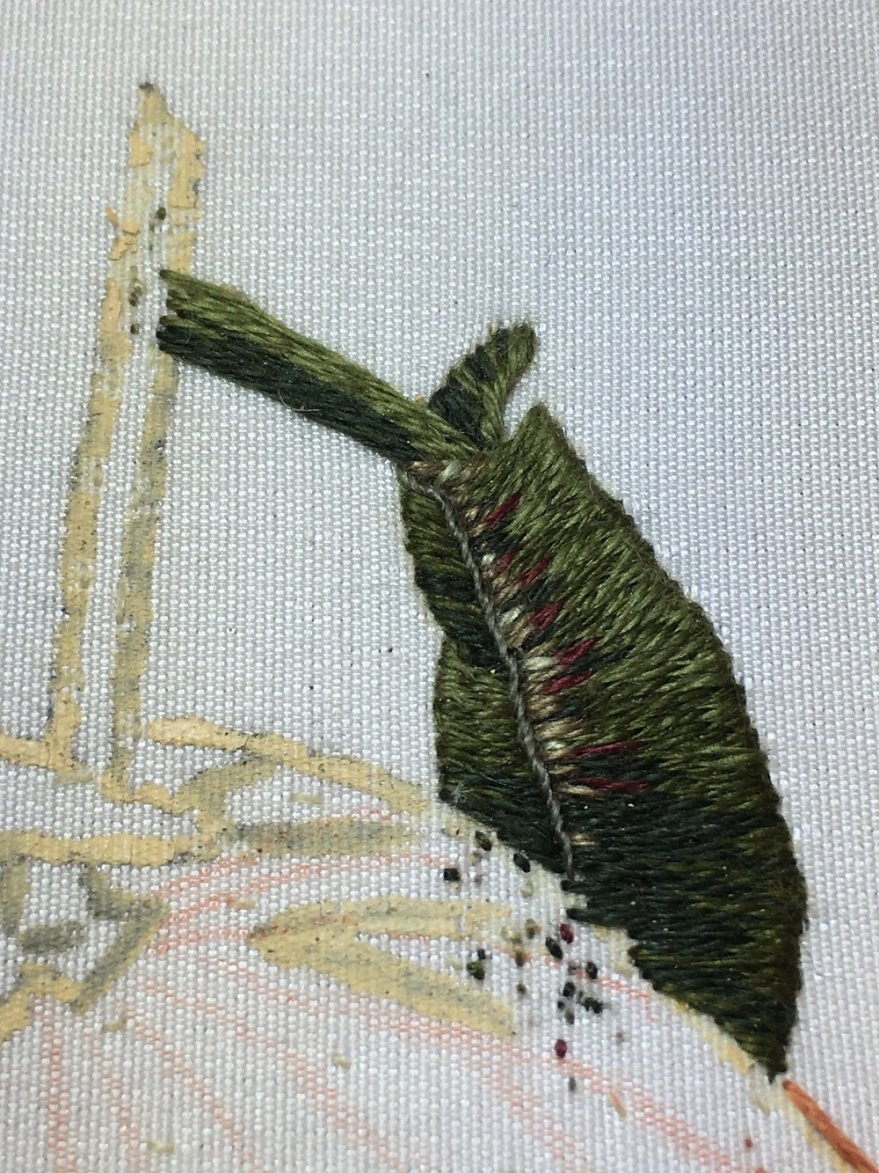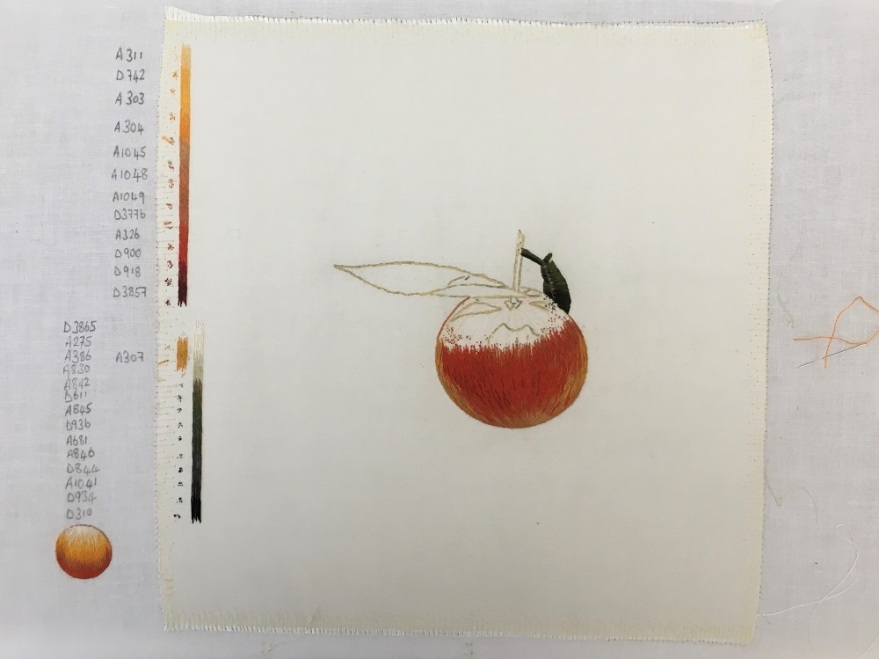I finished module 1! It took a year, but that’s no bad thing seeing as I can’t afford to do this course any faster. At a grand per module I’d be crazy not to take my time.
I had to use up a little of my first class of the next module just to get the mounting done, but that doesn’t seem to matter. The mounting is meticulous, involving cutting board to size, covering it with calico (glued down on the reverse), pulling the work taut over the board and herringbone stitching it to the calico, then carefully slip stitching a piece of cotton sateen over the ugly bits.
General opinion on mounting seemed to be one of passionate hatred, but to be honest I really didn’t mind doing it at all! It does take a while, but then so does the stitching and at the end of the day I’m there for the express purpose of doing lengthy, hands-on tasks. (Apparently assessment is very strict on this element though, so I might be humming a different tune when I’ve been marked down for not smoothing my pin holes to complete invisibility, or some other trifle.)


In general I’m pleased with the finished product. No, the design isn’t what I’d have gone for given a totally free reign, but the brief was very tight and I do think I’ve managed to maintain at least a little of my own style.
Below are some closer detail photos with a brief description of the stitches shown…

Padded satin monkey, with whipped backstitch feet, long and short face, bullion knot ears, turkey rug hair and a bunch of french knot grapes. Upper part of the trunk is in burden stitch, lower part is chain.

Pearl stitch monkey tail, with chain stitch and burden trunk sections.

Long and short leaves at the top of the berry, laid work inside, outlined with couching.

Laidwork, long and short and couching.

Whipped and woven wheel grapes, stem stitch vine and french knot stump top.

Chain stitch vines, french knot grapes, chain and burden stitch trunk sections.

Lower left section of trunk is block shading, central section is heavy chain, regular chain on the right side. Raised stem band vine. Stem stitch and french knots in the trunk detail.


Outer leaf with stem stitch outline, running stitch and french knots at edge. Van Dyke, cretan and fishbone teardrops inside, filled with seed stitch. Inner area in trellis with contrasting pips.Buttonhole stitch at top.
All these new stitches have been really inspiring and I definitely want to make more interesting personal projects now. I’ve already made a tropically-themed felt brooch for the office summer party which made it clear how this course has given my stuff a real boost! I love seeing contemporary crafters, and artists for that matter, using embroidery to produce subversive and modern work, but nine times out of ten I’m disappointed by the naivety of the craftsmanship – just because something’s witty doesn’t mean it can’t be well founded. If there’s one thing I’ll be taking away from this it’s that the supposedly dying art of traditional embroidery can be enormously versatile and it’s a shame that so many young and enthused crafters are peaking at a cross-stitch with a bit a swearing in it. Push the envelope guys! Throw a bit of Van Dyke in there :)

